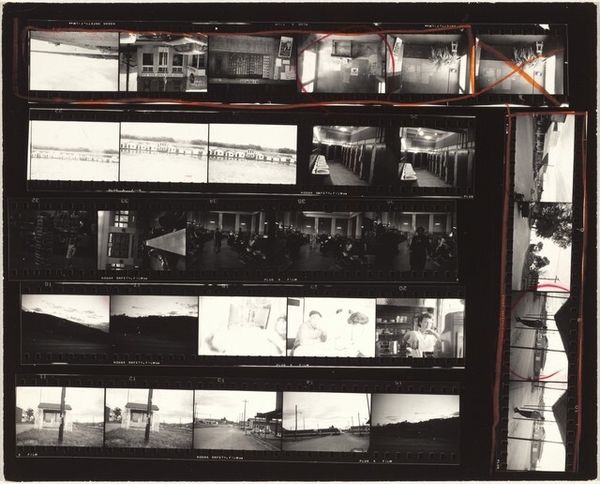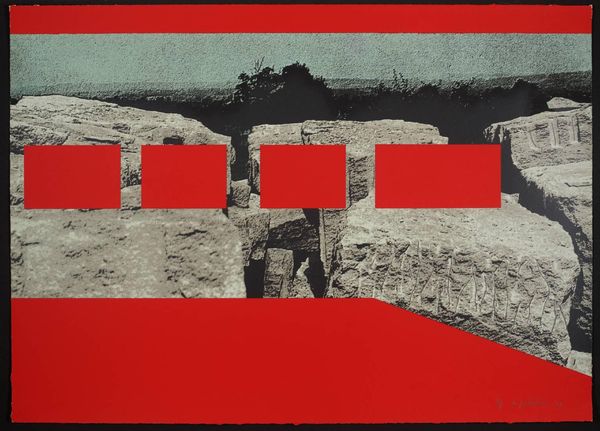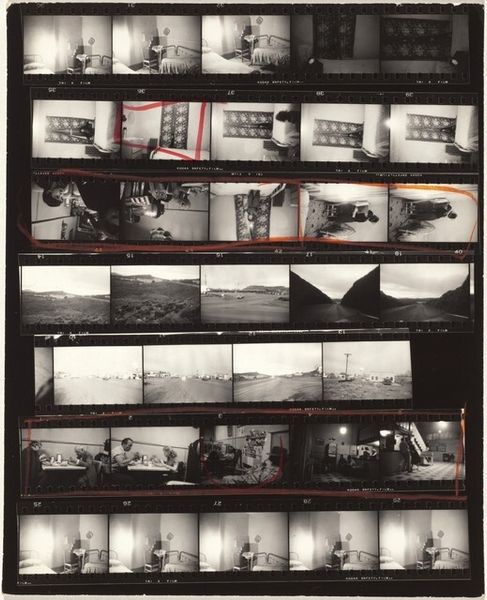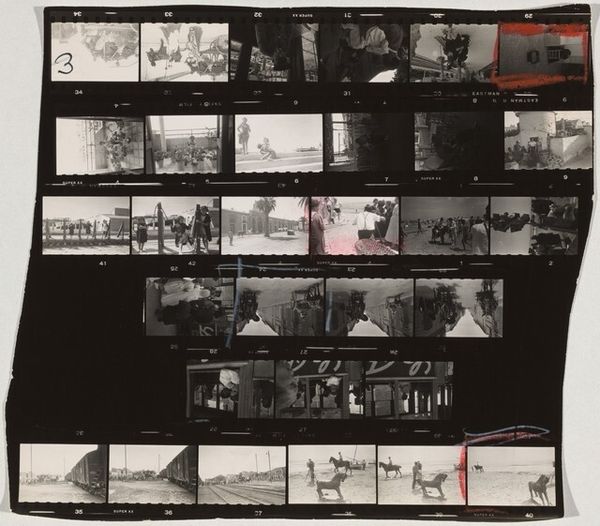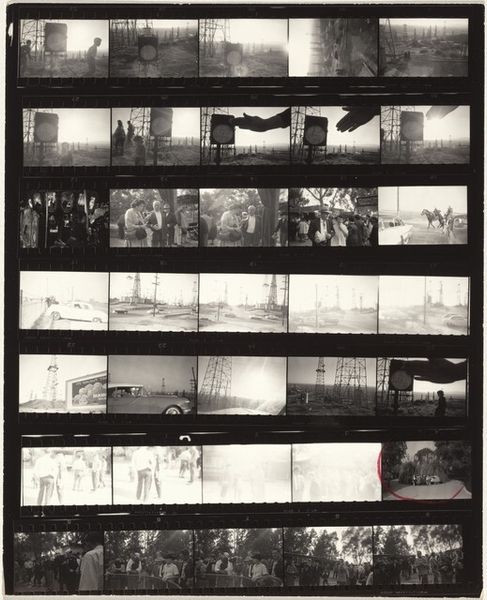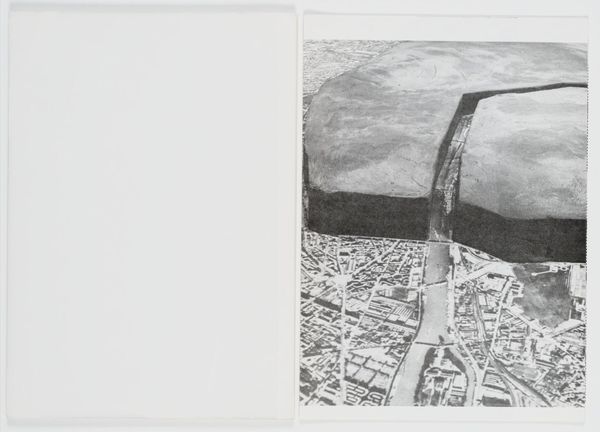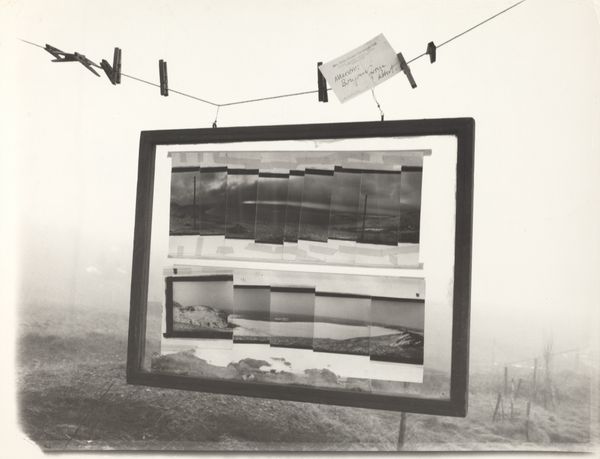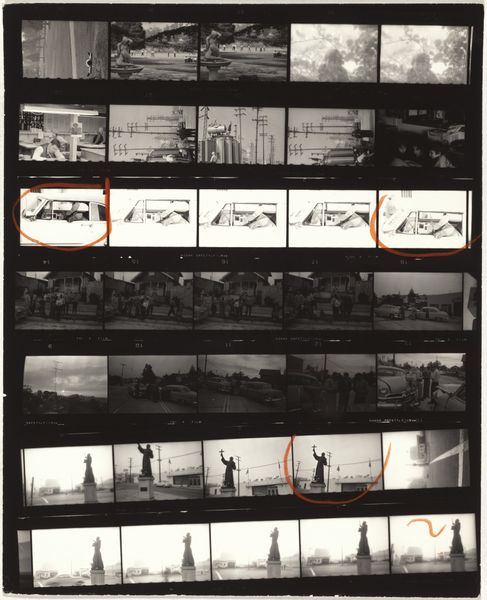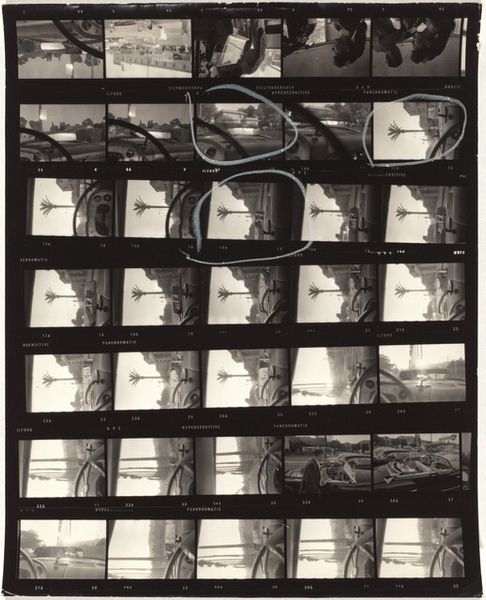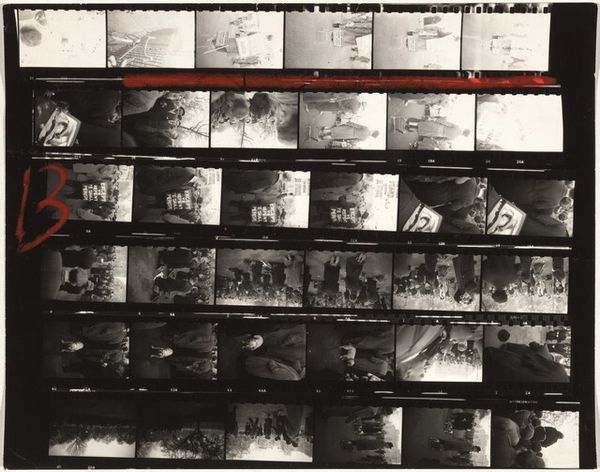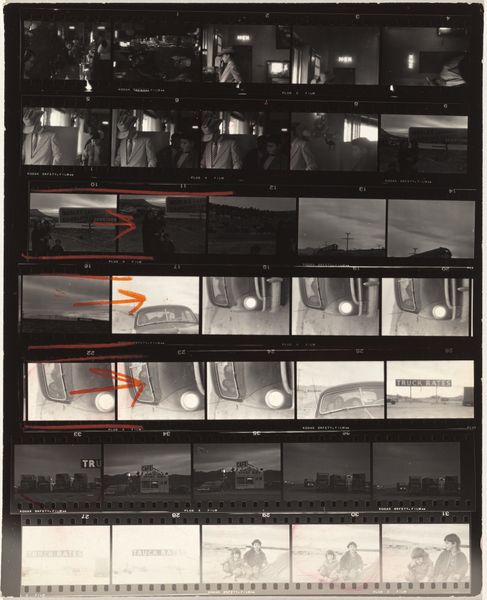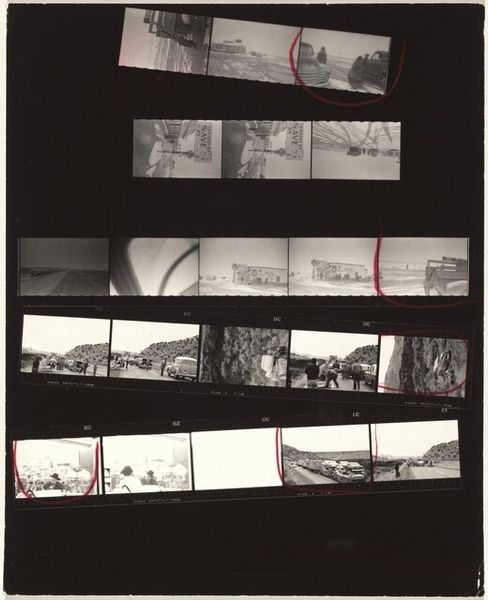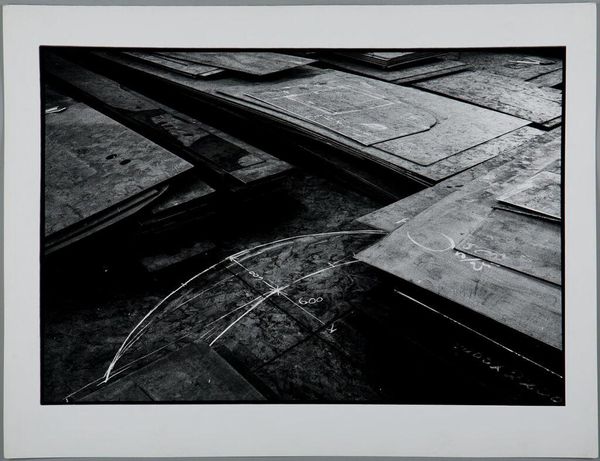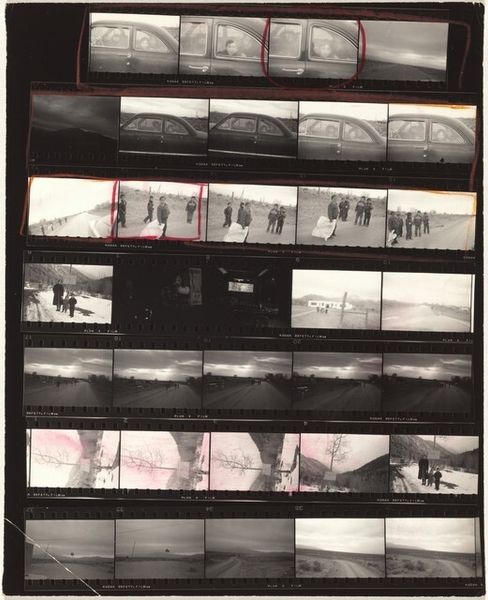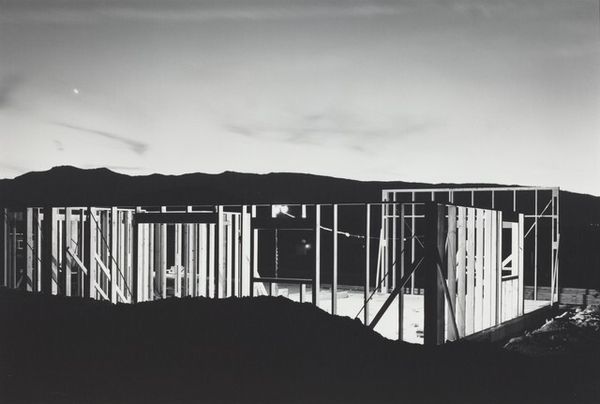
mixed-media, photography, watercolor
#
mixed-media
#
narrative-art
#
postmodernism
#
landscape
#
photography
#
watercolor
#
mixed medium
#
mixed media
#
watercolor
Dimensions: sheet: 51.1 x 60.6 cm (20 1/8 x 23 7/8 in.)
Copyright: National Gallery of Art: CC0 1.0
Curator: Robert Frank's "Mabou," created in 1979, combines photography and watercolor in a mixed-media landscape, offering a potent visual narrative. What catches your eye first about this piece? Editor: It feels like peering into fragments of memory, or perhaps glimpses through fractured realities. There's a sense of coldness, and starkness - but also a search, articulated by those empty picture frames in the landscape. Curator: That sense of coldness is interesting. For me, there's a loneliness in those empty frames, standing in snowy landscapes. They appear almost as portals. I wonder about the use of frames in a photograph—it's a layer of artifice commenting on… what exactly? Editor: The frames might serve as symbols for perspective and memory, maybe representing how we choose to isolate and immortalize moments. Their emptiness, set against real, albeit stark landscapes, poses questions about presence versus absence, experience versus record. Like empty stages waiting for a drama to unfold. Curator: And Frank's hand-painted additions, especially those cryptic phrases "Yesterday," "Fire to the South," "To the Best America"—they pull at something subconscious. The blue wash at the bottom, mimicking the sky in other places, adds a surreal touch. Editor: Yes, those fragmented phrases contribute to the piece’s sense of disquiet, like thoughts that float to the surface but lack clear context. America becomes this contested dream, marred by an ever-present tension between promise and reality. Curator: It certainly is a meditation on time, place, and the act of seeing. It's very postmodern in that way—layering imagery and text to create something both deeply personal and unsettlingly universal. Almost as if the journey itself matters, even more than arriving at the intended view through those empty frames. Editor: Ultimately, Frank crafts an experiential labyrinth where the viewers bring their interpretations and emotional context. In a way, that incomplete framework aligns with human memory: fragmented, altered, but enduringly potent in impact.
Comments
No comments
Be the first to comment and join the conversation on the ultimate creative platform.
